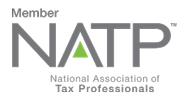by | Feb 28, 2022 | Tax Tips and News
The Internal Revenue Service has published a new set of frequently asked questions on the Premium Tax Credit, giving taxpayers the latest and best information on how—and why—to claim the credit.
Start with the basics
The Premium Tax Credit is aimed at low- or moderate-income taxpayers and families who may not be able to afford health insurance that is sold through the Health Insurance Marketplace (also known as the Exchange).
Credit amounts are based on a sliding scale: the lower the income of the qualifying taxpayer, the higher the credit amount available to help cover the cost of their health insurance.
When taxpayers sign up for health insurance through the Marketplace, they can choose to have the Marketplace figure an estimated credit, which will be paid to the insurance company directly to lower what the taxpayer has to pay for their monthly health care premiums.
The taxpayer has the option to have these advance payments made for them by the Marketplace. If that’s the case, the taxpayer will have to reconcile the amount of advance credit they got with the actual credit amount when they file their tax return for the year.
Whether or not direct payments were authorized, the taxpayer fills out Form 8962, Premium Tax Credit (PTC) and sends it to the IRS with their income tax return.
The Premium Tax Credit is refundable, which means the taxpayer can receive the difference between the amount of the credit and their tax due as a refund. Even if the taxpayer doesn’t owe any tax, they may still qualify to get the entire credit amount refunded.
Updating the FAQs
The IRS has published the updated frequently asked questions surrounding the Premium Tax Credit in Fact Sheet 2022-13, found on the IRS website.
The new and improved FAQs include:
- Updated The Basics FAQs: Q1, Q3, Q4
- Updated Eligibility FAQs: Q5, Q7, Q8, Q9, Q11
- Updated Reporting, Claiming and Reconciling FAQs: Q24, Q26, Q27
- Updated Suspension of Repayment of Excess Advance Payments of the Premium Tax Credit (Excess APTC) for Tax Year 2020 FAQs: Q33, Q36
- New Unemployment Compensation 2020 and 2021 FAQs: Q38 through Q45
The IRS reminds that frequently asked questions are their vehicle to deliver the updated information quickly to taxpayers, but should not be relied upon for legal advice before such bodies as the Tax Court.
More information about such reliance is available.
Sources: IR-2022-44; FS-2022-13
– Story provided by TaxingSubjects.com
by | Feb 25, 2022 | Tax Tips and News
Judging from the likes of food, gasoline and other staples, it should come as no surprise that the Internal Revenue Service is revising its interest rates, starting in the second quarter of this year.
The Internal Revenue Code dictates that interest rates are to be determined quarterly, and beginning next quarter, those rates are going up. The IRS says the new rates will be:
- 4% for overpayments (3% in the case of a corporation);
- 5% for the portion of a corporate overpayment exceeding $10,000;
- 4% for underpayments; and
- 6% for large corporate underpayments.
Normally, for those taxpayers who aren’t corporations, the overpayment and underpayment rate is the federal short-term rate plus 3 percentage points.
For those taxpayers who are corporations, the standard underpayment rate has generally been the federal short-term rate plus 3 percentage points, while the overpayment rate was the federal short-term rate plus 2 points.
Big corporations, though, have had to shell out the federal short-term rate plus 5 percentage points for underpayment of tax. The rate for overpayment has been the federal short-term rate plus half a percentage point (0.5), levied on the part of a corporate overpayment that exceeds $10,000 for a taxable period.
The IRS says all the new rates were calculated from the federal short-term rate that took effect on February 1, based on daily compounding.
For more information on the new rates, look for the official announcement, Revenue Ruling 2022-05, that will be dated March 7, 2022 in the Internal Revenue Bulletin 2022-10.
Source: IR-2022-42
– Story provided by TaxingSubjects.com
by | Feb 24, 2022 | Tax Tips and News
A lot has been said and written recently about the various credits put forth to counter the economic effects of the pandemic and how they affect parents’ tax liabilities.
But what about those taxpayers whose tax picture is, one could say, a bit more fluid? The Internal Revenue Service acknowledges some parents have legal agreements covering just who claims the child on their taxes.
These parents may be divorced; they may be separated; they may alternate claiming the child on their taxes. The IRS has now issued guidance targeted to these taxpayers and their unique responsibilities.
Economic Impact Payments and the Recovery Rebate Credit
The third Economic Impact Payment (EIP) was, in reality, an advance payment of the 2021 Recovery Rebate Credit, using the taxpayer’s tax information from 2019 or 2020 to determine if they were eligible for the credit and how much they should receive.
There are a couple of extra considerations for those taxpayers who share a qualifying dependent.
If an eligible taxpayer didn’t receive a third-round Economic Impact Payment for a qualifying dependent they’ll claim on their 2021 tax return, the taxpayer can still claim the 2021 Recovery Rebate Credit—even if the other parent claiming the shared dependent already received an EIP.
Conversely, if a taxpayer got a third-round Economic Impact Payment for a dependent they will not claim on their 2021 tax return, they are not required to pay back all or part of the EIP if the information on their 2021 return indicates they should have received less.
Child Tax Credit
The IRS used taxpayers’ 2020 tax returns to determine who got the advance child tax credit payments in 2021. If the IRS had not yet processed the taxpayer’s 2020 return, the agency used their 2019 return instead.
This means that the parent who claimed a shared dependent on their 2020 return would have gotten the advance payments of the child tax credit in 2021.
The IRS says parents of shared dependents have a couple of issues to think about:
- Families who knew they would not claim a child on their 2021 return had the option to unenroll from receiving monthly payments by using the Child Tax Credit Update Portal at IRS.gov. People who did not unenroll and received monthly payments during 2021 for a child they won’t claim on their 2021 tax return could have to repay those payments when they file. They may be excused from repaying some or all of the excess amount if they qualify for repayment protection.
- An eligible parent who did not receive advance payments for a qualifying child will be able to claim the full amount of the child tax credit for that child on a 2021 tax return even if the other parent received advance child tax credit payments.
Those taxpayers who received advance credits during 2021 should compare the total amount they got with the total they are eligible to claim. An easy way taxpayers can make this comparison is to sign onto their Online Account.
Spouses should remember that if they received joint payments, they’ll have to each sign into their own online account so they can retrieve their respective amounts.
More information for parents of shared dependents can be found in the following resources:
Source: COVID Tax Tip 2022-29
– Story provided by TaxingSubjects.com
by | Feb 22, 2022 | Tax Tips and News
The Internal Revenue Service doesn’t want the March 1 tax deadline for farmers and fishermen to be “the one that got away.” Those taxpayers have to pay their entire tax bill from their respective businesses by that time if they didn’t make estimated tax payments.
The March 1 deadline payment date is a special rule, usually applied when a farming or fishing operation made up at least two-thirds of the gross income in either the current year or the previous year. This means filing by the regular April 18 deadline, but paying the tax due in full by March.

Estimated tax payers should make a payment by January 15 to escape a penalty.
Taxpayers can use their Online Account to set up payments through their bank account. They can also schedule payments ahead of time with IRS Direct Pay.
See Publication 505, Tax Withholding and Estimated Tax, for details on estimated tax payments.
Filing for the farmers
Those in the business of farming will report their income and expenses on Schedule F (Form 1040), Profit or Loss From Farming. If their net earnings from farming are $400 or more, they’ll also have to use Schedule SE (Form 1040), Self-Employment Tax, to calculate their self-employment tax due.
Two good resources are Publication 225, Farmer’s Tax Guide (check out Topic No. 554) and the Agricultural Tax Center webpage.
Filing for the fishermen
Schedule C (Form 1040), Profit and Loss from Business (Sole Proprietorship) is the main vehicle to report income and expenses from fishing. Like farmers, fishermen will calculate their self-employment tax using Schedule SE (Form 1040) if they have more than $400 in net earnings from fishing.
General information is available about rules applying to individuals – including commercial fishermen – who file Schedule C. Consult Publication 334, Tax Guide for Small Business.
For those whose business is a partnership or a corporation, Publication 541, Partnerships, or Publication 542, Corporations, can be useful.
Paying online is the fast way to pay
The Internal Revenue Service urges taxpayers, including farmers and fishermen, to pay their tax bill online if possible. Using one’s online account is fast, allowing taxpayers to make same-day payments from their checking or savings accounts. The online account also allows taxpayers to keep tabs on the other aspects of their tax life, from the Adjusted Gross Income calculated on their latest tax return, to tracking their advance payments received from the Child Tax Credit.
IRS Direct Pay is another option for taxpayers, scheduling a payment from their bank account to meet a tax deadline – no registration or login required. The Electronic Federal Tax Payment System, however, should be used by those taxpayers sending payment of business taxes. Enrollment is required to use EFTPS.
Find more information in Tax Topic 416, Farming and Fishing Income; Publication 5034, Need to Make a Tax Payment? (Available in English and Spanish), or visit IRS.gov/payments.
Source: IRS reminds those with farming, fishing businesses of March 1 tax deadline
– Story provided by TaxingSubjects.com
by | Feb 18, 2022 | Tax Tips and News
Phishing emails are a common threat found in your inbox. While these scams range from too-good-to-be-true business opportunities to aggressive threats from “government agencies,” one specific type—spear-phishing scams—can be more challenging to identify at a glance because they are custom-built for each target.
The Internal Revenue Service shared a Security Summit warning about a new spear-phishing scam that specifically targets tax professionals. These messages appear to come from the IRS—even including the agency’s logo—or “a tax preparation application provider,” and they direct recipients to click on an embedded link to resolve an issue with their tax software account or download an “unusual activity report.”
Remember, knowing what to look for can help you avoid falling victim to these scams. So, tax professionals should be on the lookout for any email that contains a subject line like “Action Required: Your account has now been put on hold,” and this is an example of one of these emails that was provided by the IRS:
Your account has now been put on hold
ALL preparers are required to apply security feature to their Tax Pro account towards 2021 Tax Returns processing.
You have failed to apply new update before expiry date
You are restore and update your acc|ount immediately.
Please Click Here to update your acc|ount now.
Important
Failure to update your account within the next 24hours will lead to you account being terminated and be barred from filing tax returns claims for 2021 tax season Your access will be restored once you have updated your details.
Sincerely,
IRS.gov eServices
What should I do if I receive one of these spear-phishing emails?
If you receive an unexpected or suspicious email—even if it appears to be from a trusted source like the IRS—never respond to the sender or click on embedded links and attachments.
When you respond to an email, two things generally happen:
- You let the criminals know that they sent their scam to an active email address
- You accidentally share information that criminals can use to steal your information
Clicking on links and attachments is also dangerous since they can “download malware onto [your] computer;” the Summit warns that these phishing emails appear to generate a pop-up containing fields where victims are expected to enter information.
What should I do if I clicked on a link in one of these spear-phishing emails?
If you fell victim to one of these spear-phishing scams, the Summit says you should immediately contact Support for your tax preparation software provider. Next, they say you need to take the following steps to report the scam:
- Save the email as a file and then send it as an attachment to phishing@irs.gov
- Notify the Treasury Inspector General for Tax Administration at www.tigta.gov to report the IRS impersonation scam
The IRS release closes with links to additional resources:
What is the Security Summit?
The Security Summit is a partnership between the IRS, state departments of revenue, and the private tax industry that is dedicated to raising awareness of tax-related data security threats. This group hosts outreach campaigns throughout the year, providing data-security alerts and tips to taxpayers and tax professionals.
To learn more, visit the “Security Summit” page on IRS.gov.
Source: IR-2022-36
– Story provided by TaxingSubjects.com











